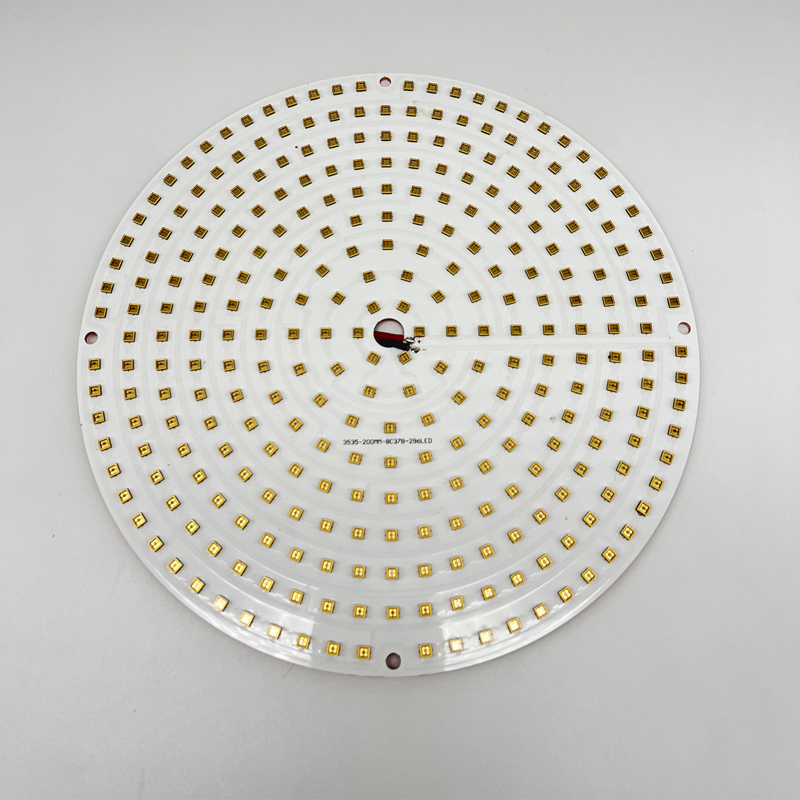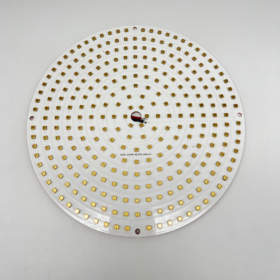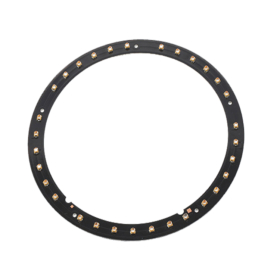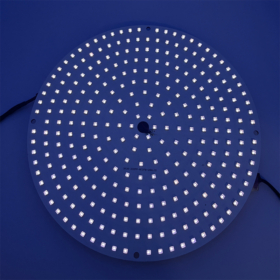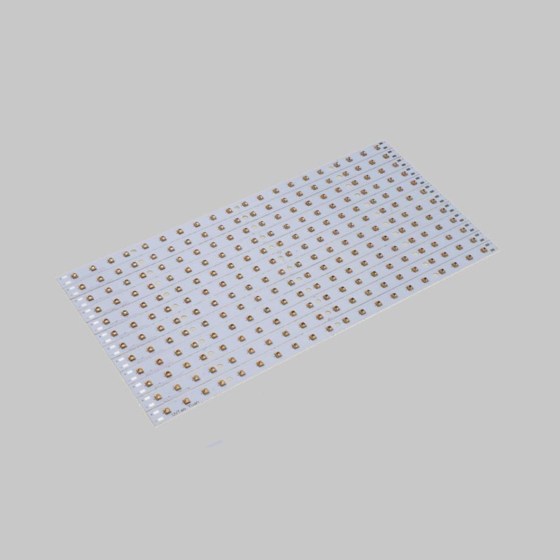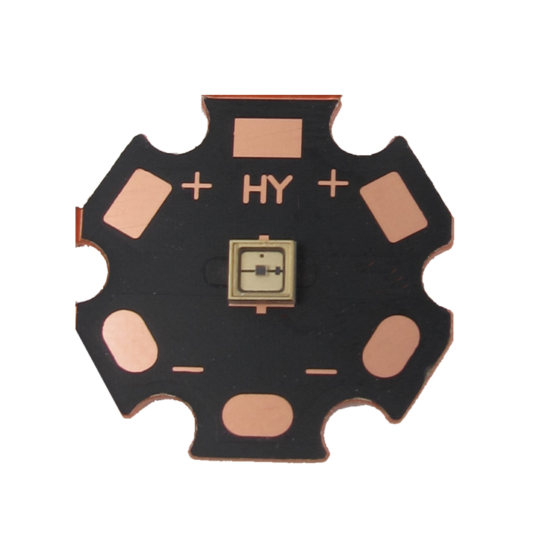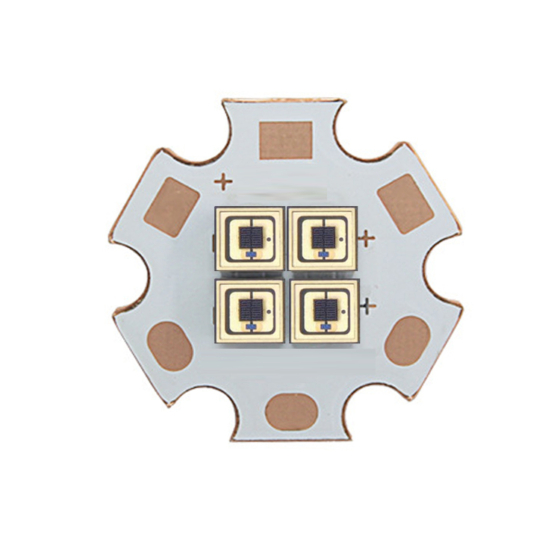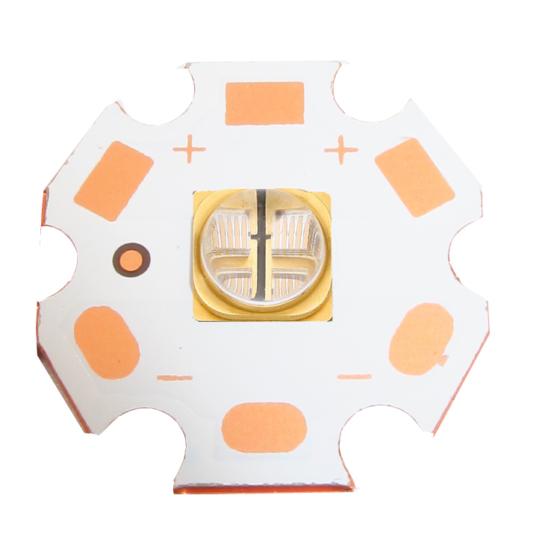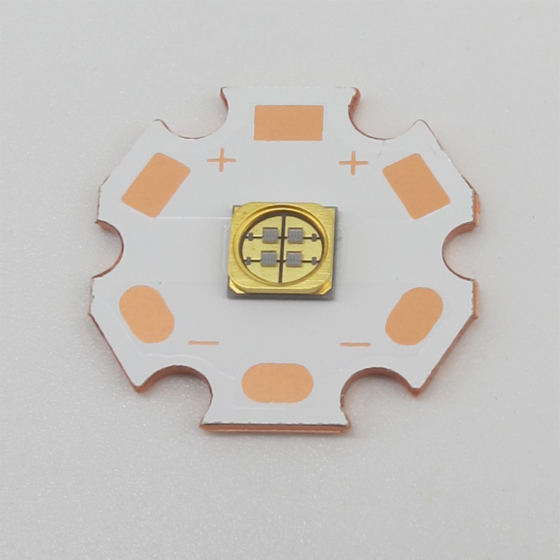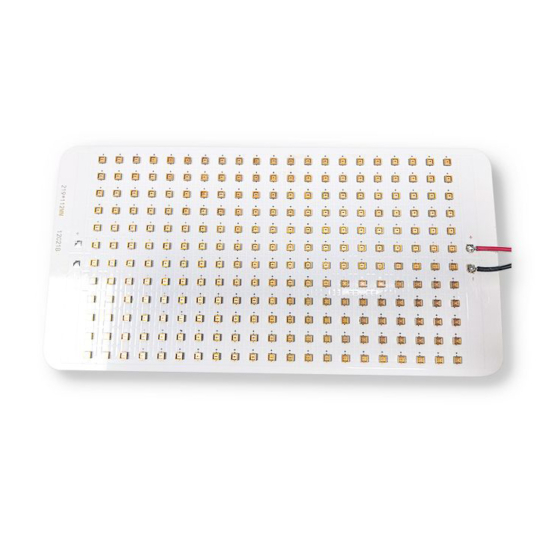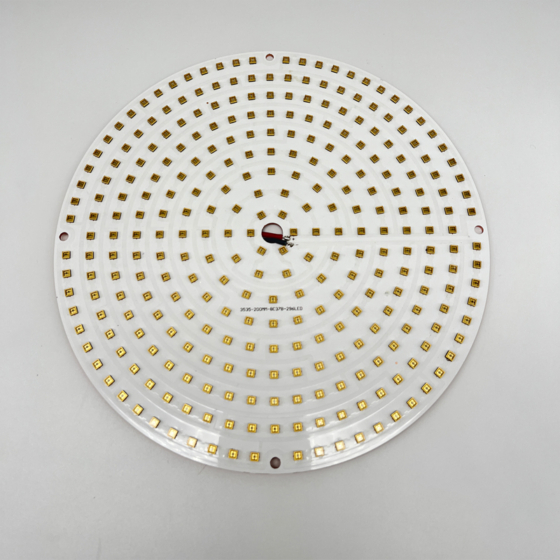High-power UVC LED Modules
UV-Cbased LEDs are a relatively new technology. Examples of wavelengths currently commercially available include 222nm, 235nm, 255nm, 254nm, 265nm 275nm, and 270nm However, UV-C LED technology is rapidly developing, and over time new wavelengths will be developed, costs will reduce and efficiencies will increase as has already happened within the red, infrared, blue, and UV-C wavelength LED ranges.
UVC LEDs vs. Traditional Technologies
Many applications use Mercury based UV lamps for UVC LIGHTING applications but this technology has a number of disadvantages versus LED technology. There is increased regulation around mercury usage and its environmental impact resulting in increased disposal costs and proposed bans in some countries. These systems also require the use of chlorine to enable disinfection and are typically much larger than LED-based systems.
UVC LED Modules Application:
| Product model |
Voltage (V) |
Peak Wavelengthl (nm) |
Optical Power (mW) |
RdiantIntensity uw/cm²(1cm) |
Current (mA) |
Spectrum Half (nm) |
Angle |
| HYE35P20F250AG-P1 | 5.5-6.0 | 250-260 | 25-30 | 2718 | 150 | 11 | 120 |
| HYE35P20D250AG-P1 | 5.5-6.0 | 250-260 | 30-35 | 2278 | 150 | 11 | 120 |
| HYE35P20F260AG-P1 | 5.0-5.5 | 260-270 | 30-35 | 3244 | 150 | 11 | 120 |
| HYE35P20F270AG-P1 | 5.0-5.5 | 270-280 | 30-35 | 4560 | 150 | 11 | 120 |
| HYE35P22D270AG-P1 | 5.0-5.5 | 270-280 | 80-90 | 6144 | 250 | 11 | 120 |
| HYE35P30F250AG-P1 | 5.5-6.0 | 250-260 | 50-60 | 5571 | 350 | 11 | 120 |
| HYE35P30F260AG-P1 | 5.0-5.5 | 260-270 | 50-60 | 5546 | 350 | 11 | 120 |
| HYE35P30F270AG-P1 | 5.0-5.5 | 270-280 | 50-60 | 5571 | 350 | 11 | 120 |
| HYF38P20F250AG-X1 | 5.5-6.0 | 250-260 | 25-30 | 9177 | 150 | 11 | 60 |
| HYF38P20D250AG-X1 | 5.5-6.0 | 250-260 | 30-35 | 8727 | 150 | 11 | 60 |
| HYF38P20F260AG-X1 | 5.0-5.5 | 260-270 | 30-35 | 10301 | 150 | 11 | 60 |
| HYF38P20F270AG-X1 | 5.0-5.5 | 270-280 | 30-35 | 11814 | 150 | 11 | 60 |
| HYF38P22F270AG-X1 | 5.0-5.5 | 270-280 | 80-90 | 23550 | 250 | 11 | 60 |
| HYF38P30F250AG-X1 | 5.5-6.0 | 250-260 | 50-60 | 26744 | 350 | 11 | 60 |
| HYF38P30F260AG-X1 | 5.0-5.5 | 260-270 | 50-60 | 28038 | 350 | 11 | 60 |
| HYF38P20F250AG-S1 | 5.5-6.0 | 250-260 | 25-30 | 10515 | 150 | 11 | 30 |
| HYF38P20D250AG-S1 | 5.5-6.0 | 250-260 | 30-35 | 15972 | 150 | 11 | 30 |
| HYF38P20F260AG-S1 | 5.0-5.5 | 260-270 | 30-35 | 11874 | 150 | 11 | 30 |
| HYF38P20F270AG-S1 | 5.0-5.5 | 270-280 | 30-35 | 21872 | 150 | 11 | 30 |
| HYF38P22D270AG-S1 | 5.0-5.5 | 270-280 | 80-90 | 43160 | 250 | 11 | 30 |
| HYF38P30F250AG-S1 | 5.5-6.0 | 250-260 | 50-60 | 35123 | 350 | 11 | 30 |
| HYF38P30F260AG-S1 | 5.0-5.5 | 260-270 | 50-60 | 35007 | 350 | 11 | 30 |
| HYF38P30F270AG-S1 | 5.0-5.5 | 270-280 | 50-60 | 35407 | 350 | 11 | 30 |
Warmth Hint:The company is willing to personalize your customized products.
The greater the irradiation dose, the higher the disinfection efficiency.
The higher the UVC light power, the shorter the time required to kill bacteria and viruses, and vice versa, the lower the light power,The longer it takes to sterilize.


